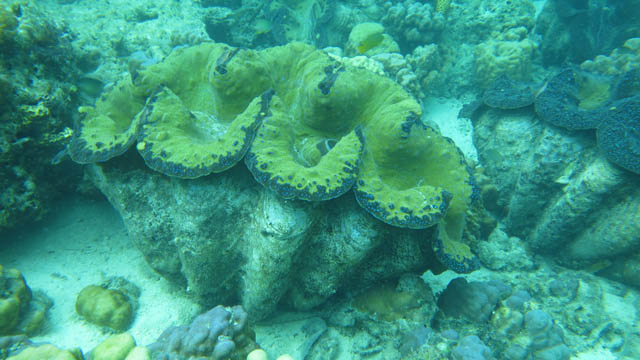| Cardiidae (cockles) |
| 137 cm SHL (male/unsexed); max.weight: 500 kg |
|
benthic; marine; depth range 0 - 35 m |
| Indo-Pacific: from Myanmar then east to Wallis and Futuna, north to Japan and south to western Australia. Introduced beyond Wallis and Futuna in the Pacific. |
|
It is white and fan-shaped with deep radiating ribs. |
| Known to be the largest bivalve mollusks that exist. Exploited for its meat and shell, this species has recently become nearly extinct within an important part of its range, due to over collecting. Trials of aquaculture under progress for the restocking of reefs and local farming (Ref. 348). Facultative planktotroph. It has an established symbiotic relationship with a dinoflagellate algae (zooxanthellae) which allows them to survive. It ingests the algae at an early stage and the latter propagates in the gut (Ref. 100719). |
|
Vulnerable (VU); Date assessed: 01 August 1996 (A2cd) Ref. 123251)
|
|
|
Source and more info: www.sealifebase.org. For personal, classroom, and other internal use only. Not for publication.

